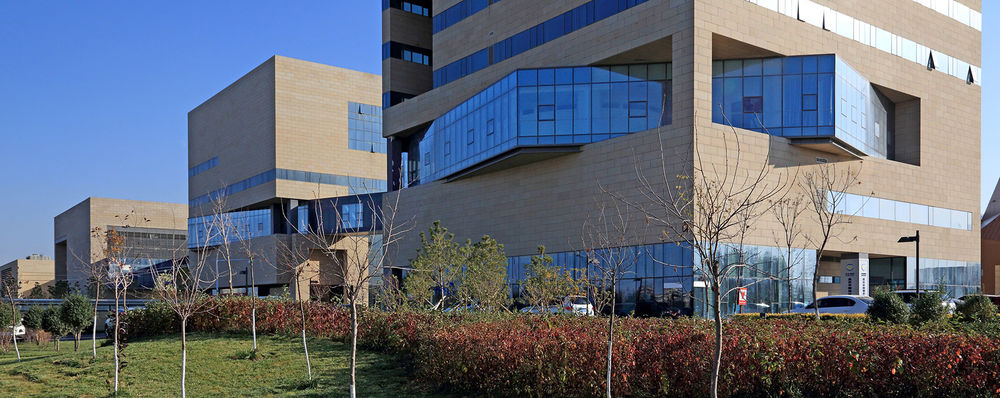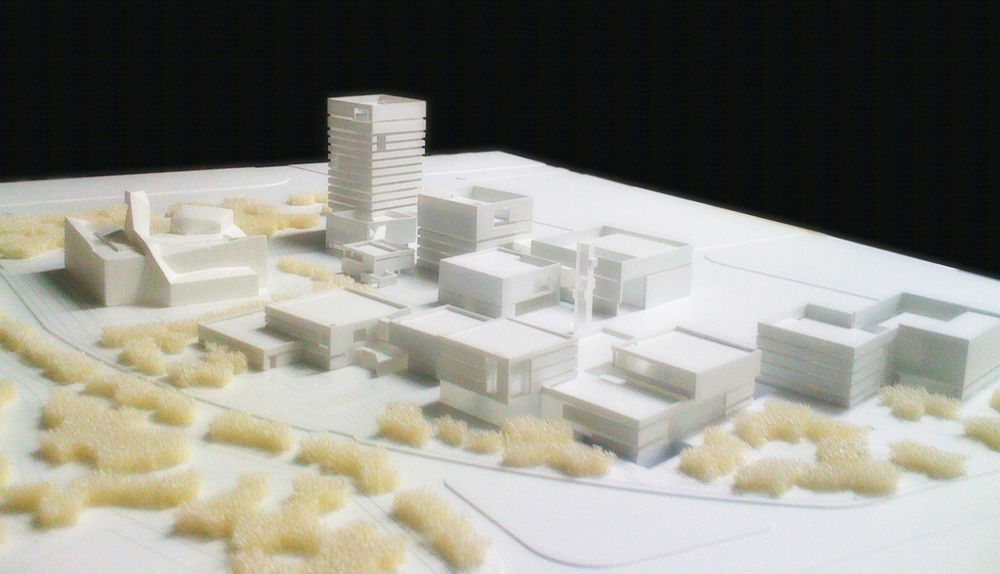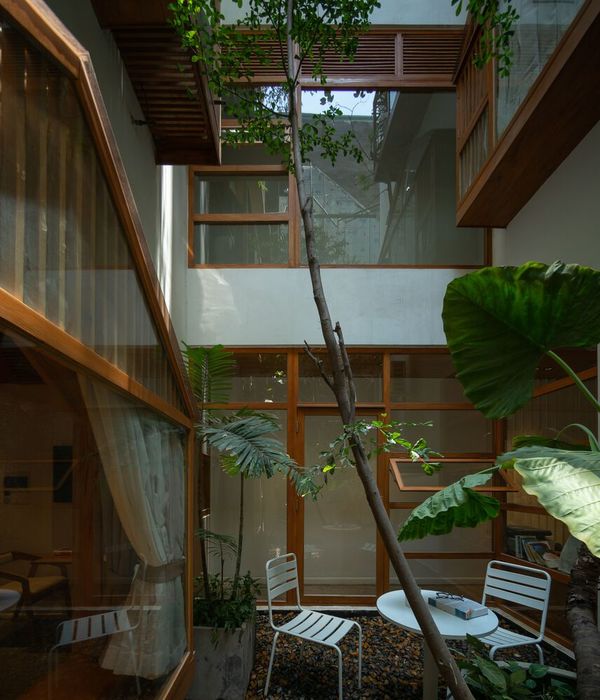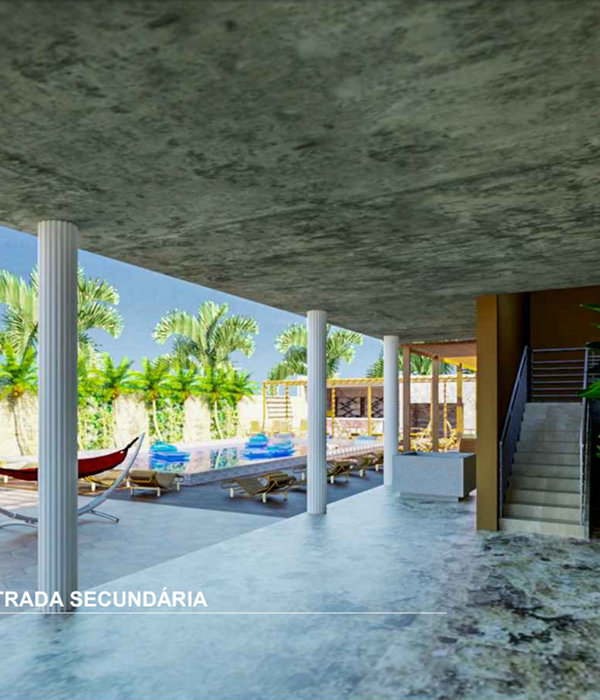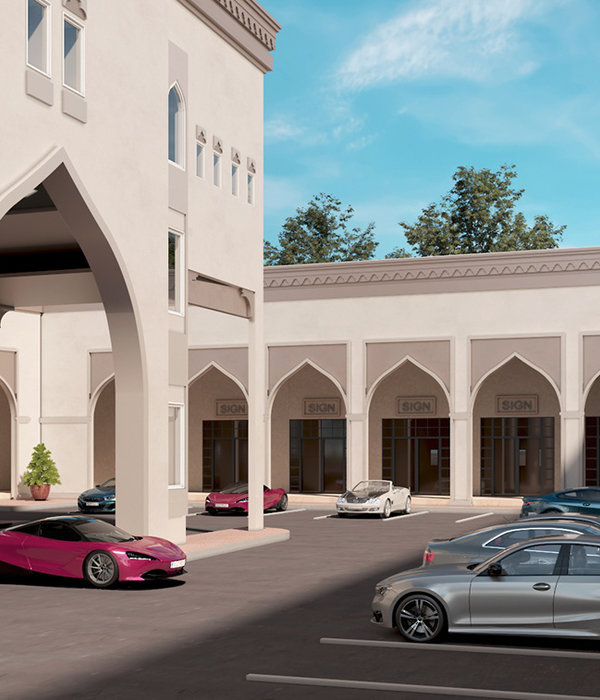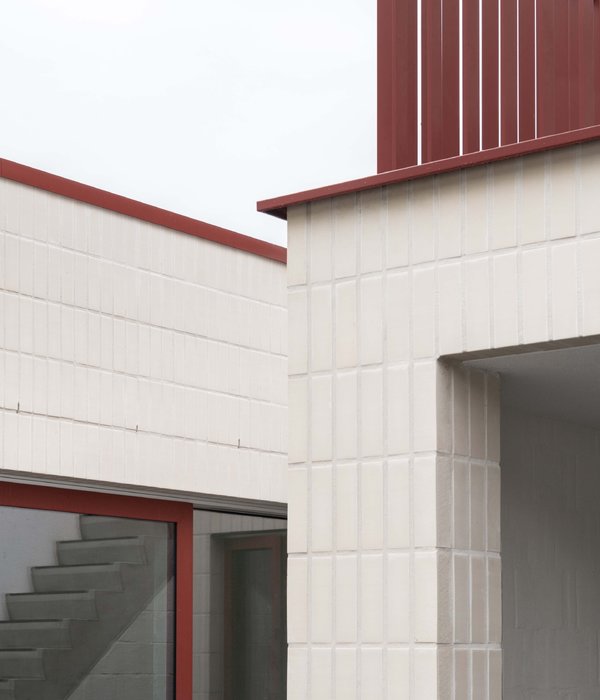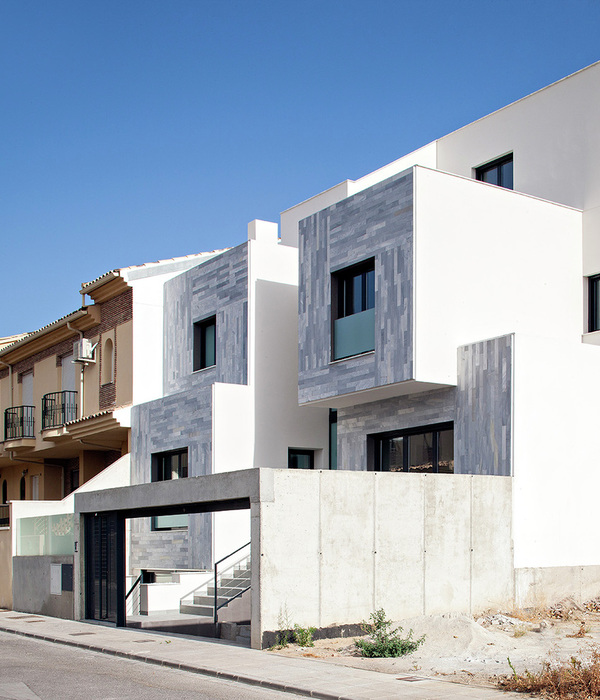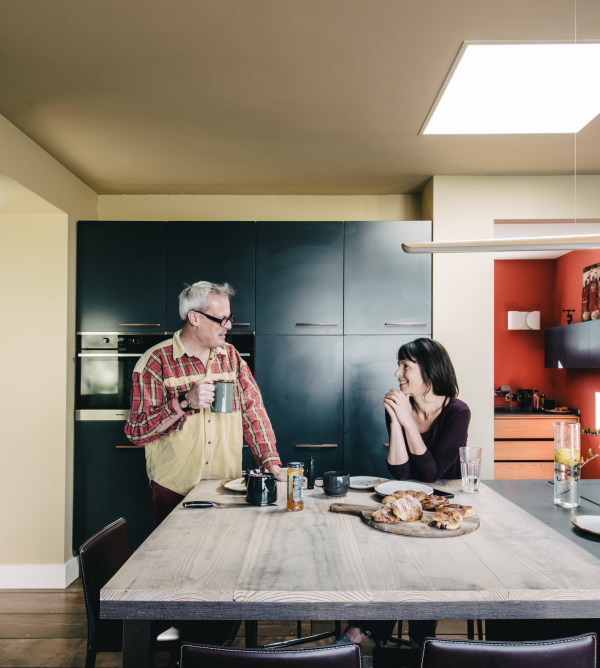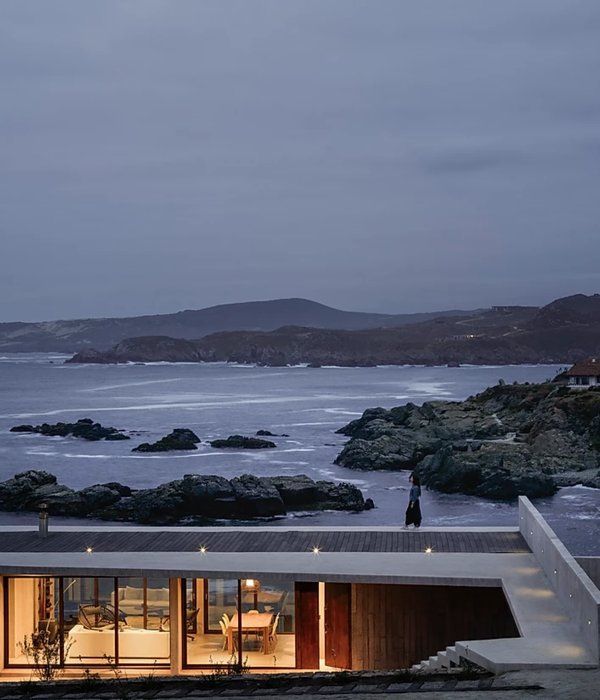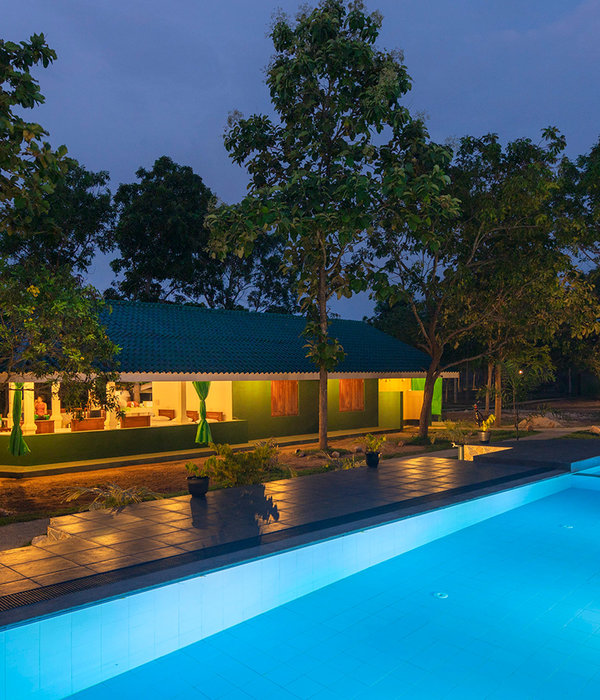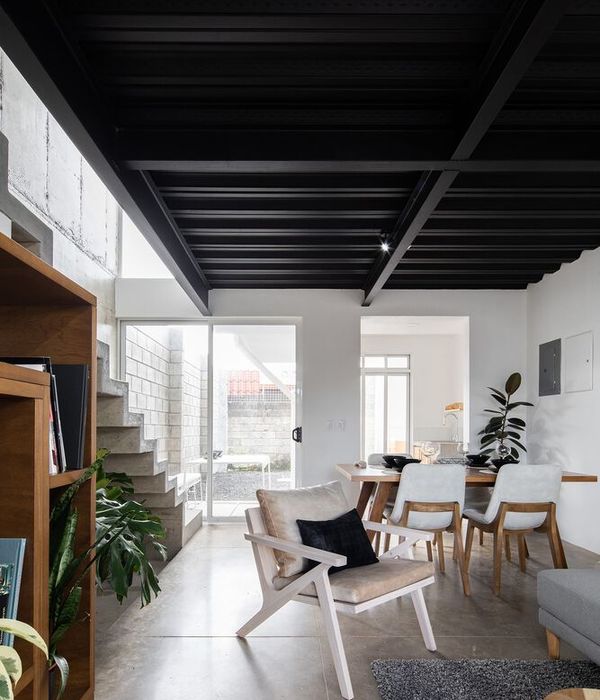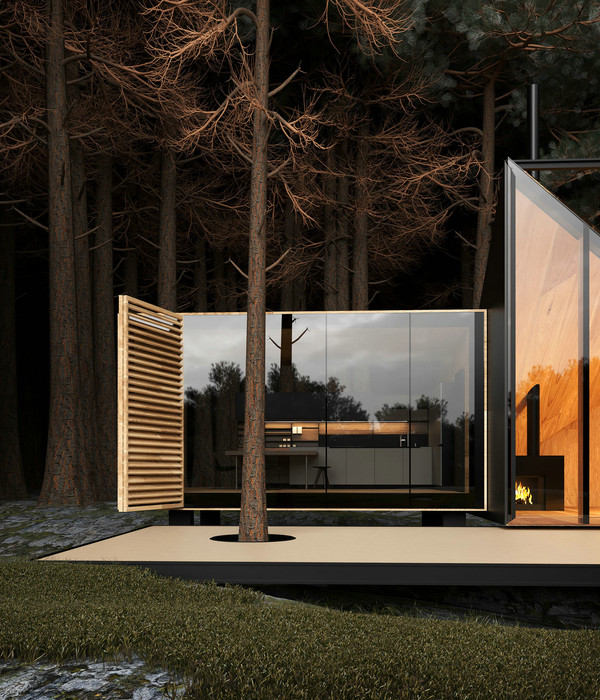新疆昌吉州文化中心 / 一合建筑设计研究中心U10
新疆昌吉州文化中心项目的主体功能是传媒中心,是集广播电视节目制作、播出、传输及行政办公、信息服务于一体的综合建筑,此外还复合了图书馆、艺术剧团等文化功能。项目团队在设计中以客观条件为前提,从文化媒体建筑本质出发,充分考虑地方性因素,用独特的构思和质朴的建筑语言,探索一种适合经济欠发达地区文化媒体建筑的创作新思维。
Changji Cultural Media Center in Xinjiang is a modern architectural complex mainly functioning as a mass media center, into which broadcast and television program producing, broadcasting and transmitting are integrated, also administrative office and information service spaces are included. Comprehensively, a library and a theater are set in this complex. Based on local conditions and essential functions, the project is designed by innovative concepts in a plain way to create a special architectural style for this cultural media complex in the economically underdeveloped region.
▼文化中心整体沿街效果,Streetscape of the complex

项目团队一改过往城市传媒大厦以集中高层建筑为主的形式,从地方特色、媒体特征、公共空间塑造入手,提出了“媒体聚落”、“城市纽带”和“信息广场”三个概念。
By breaking the tradition of only one integrated medium/high rise building for an urban mass media center, the concepts of “architectural complex” and “information plaza” are produced to build a bond between city and architecture with local, functional and public-spatial characteristics.
▼新城中的“媒体聚落”,The architectural complex

项目总建筑面积不足6万平米,用地约9万平米,相对宽松。功能上包括广播、电视及广电机关、网络公司、昌吉日报社、州文联、回族文学社、曲子剧团、歌舞团团部、图书馆等。项目团队将建筑体量打散,化整为零,分类整合功能为不同体量的立方体,根据它们的功能关系散布于场地中,形成“媒体聚落”。
The project site occupies an area of about 90,000 m2, of which the built-up area is less than 60,000 m2 and more public space is ideally available. Functional spaces in the complex include broadcast and television program producing center and relative administrative offices, offices for network companies, Changji Daily, Local Literary Federation, Literature Society for Hui Nationality, Local Music Troupe, Song & Dance Troupe, and a library. The whole building volume is reasonably tore apart into several independent ones with different functions on the site to create an “architectural complex” for mass media.
▼新城中的“媒体聚落”,The architectural complex

昌吉是丝绸北道上的重镇,至今仍保存着世界上最大、最古老、保存最完好的生土建筑城市——交河故城,以及夯土王城——高昌故城,这两处故城遗址的方正型体建筑和夯土建筑朴拙形象激发了项目团队的灵感,也是大漠聚落形态与建筑意象的原型。
Changji is a major city on the northern Silk Road, possessing the world’s largest, oldest and best preserved earth-building ruins – Jiaohe Ruins, and rammed-earth-building ruins – Gaochang Ruins. The project design is inspired by the traditionally plain architectural language from the cube-shaped and rammed-earth building forms of the two Ruins, which is the prototype of ancient architectural complex on the desert.
▼朴拙的夯土组群意象,Rammed-earth-building image with plain architectural language

▼聚落中的“城市纽带”,The indoor corridor
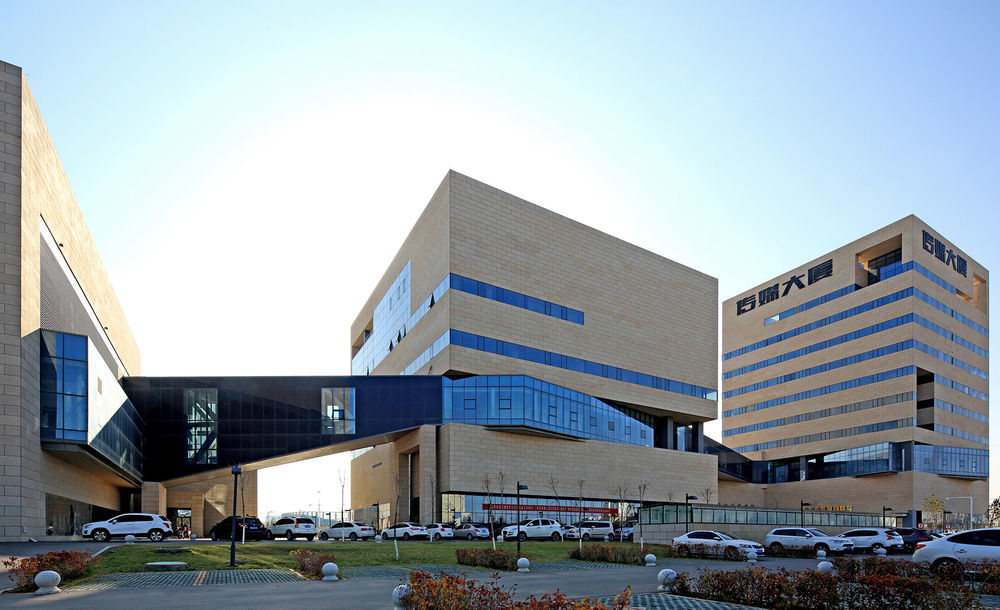
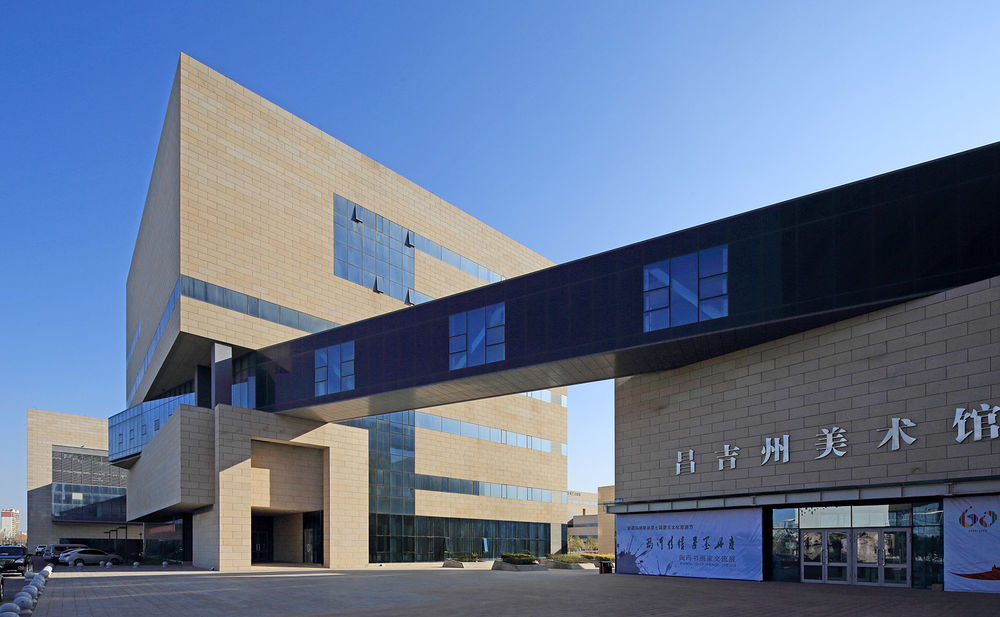
广电传媒建筑本身是有一定安全要求,但项目团队还是希望在此进行一次对于城市开放空间的实践。项目团队将广电中公共属性的功能集中设置,通过一条室内连廊作为“纽带”进行线性连接。一方面将广电的公共空间串联起来,保障了员工的便捷交流和必要工艺联系;另一方面为市民提供一条公共参观流线。
Certain security is always required in the building of broadcasting and television media. Nevertheless, the design team would like to create an urban public space for this project. Public functional spaces are built in a concentrative way, linearly connected by an indoor corridor. On the one hand, it is available for public space connection to ensure convenient communication among people working in different field in the complex; on the other hand, a public visiting walkway is provided for the citizens.
▼广电建筑中嵌入开放空间,Inlaid open space of the complex

▼立面细部,facade detail
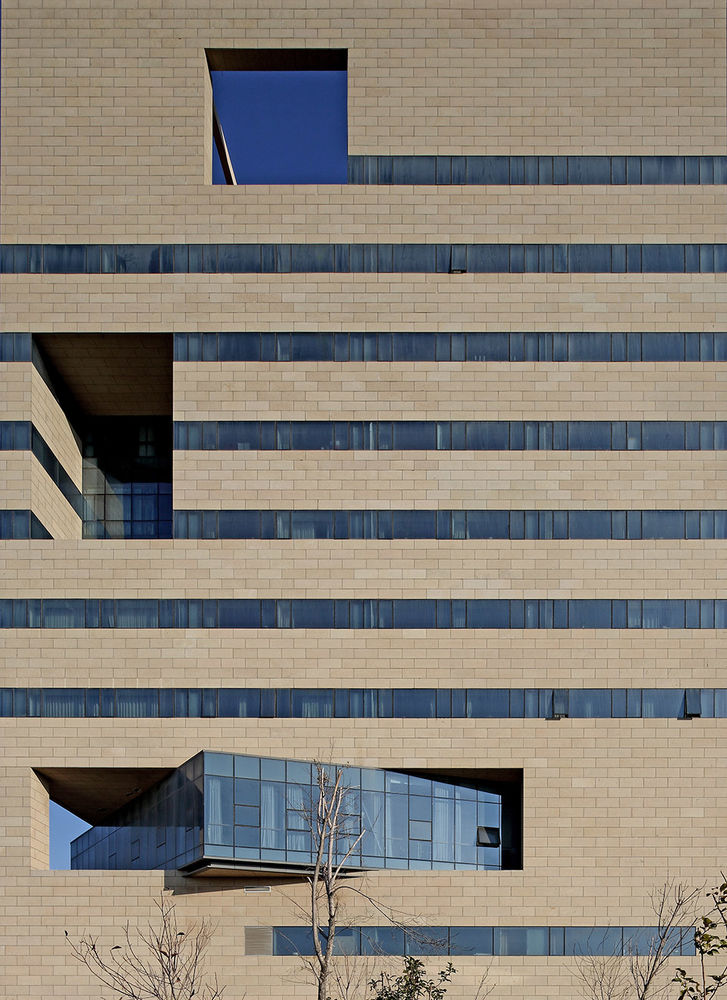
文化中心所在的新城区配套尚不完善,尤其缺乏户外公共活动场所。项目团队利用聚落形态本身围合出不同尺度的外部空间,创造出不同属性的场所,形成“信息广场”。在这里,景观和公众活动可以渗透在建筑之间,形成多层次的城市活动。
Infrastructure construction is still incomplete in the newly developing area the project site located, especially the lack of outdoor public space. Hence, the external spaces with various scales enclosed by the architectural complex are fully used to create multi-functional public space as a “information plaza”, where landscape, public space and architecture are well interacting with each other for multi-level urban activities.
▼聚落中心的“信息广场”,Information plaza


▼广场与半室外空间,Semi-outdoor space and the plaza

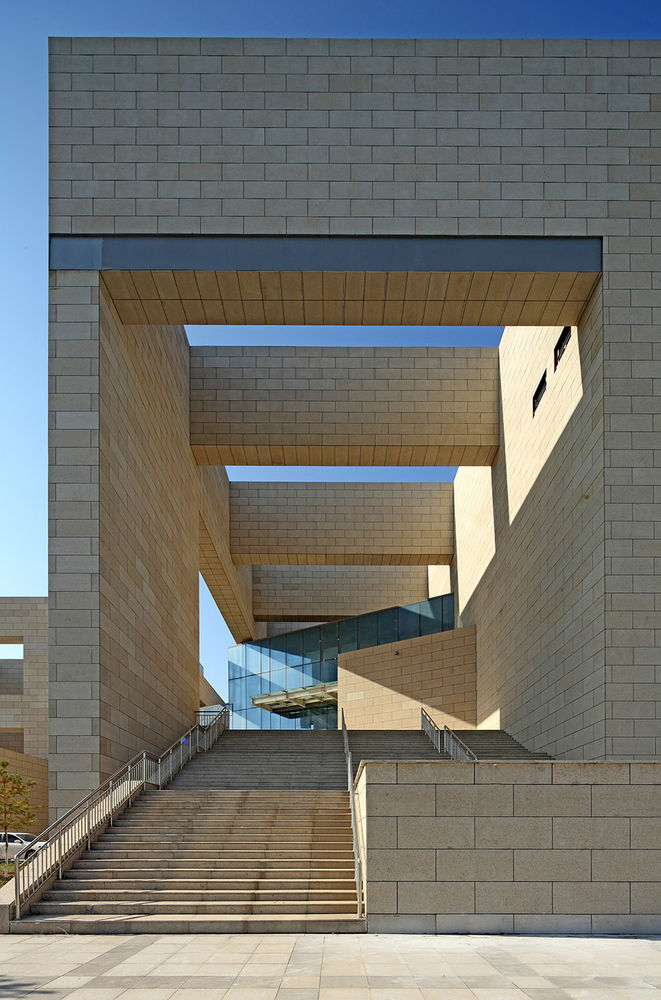
▼图书馆公共大厅,Hall of the library

昌吉州冬季漫长严寒,夏季短促炎热。为了适应这种气候,设计中充分考虑节能,立面设计上主要采用石材幕墙加带形条窗的手法,避免大面积玻璃幕墙,保证较好的热工性能。
Energy conservation is fully considered in the design due to special local climate of the short term in summer and long term in winter. Granite, as a major material, is adopted on the façade building, strip-shaped glass windows added as auxiliaries instead of large scale glass façade, to ensure better thermal performance inside.
▼夜景,night view
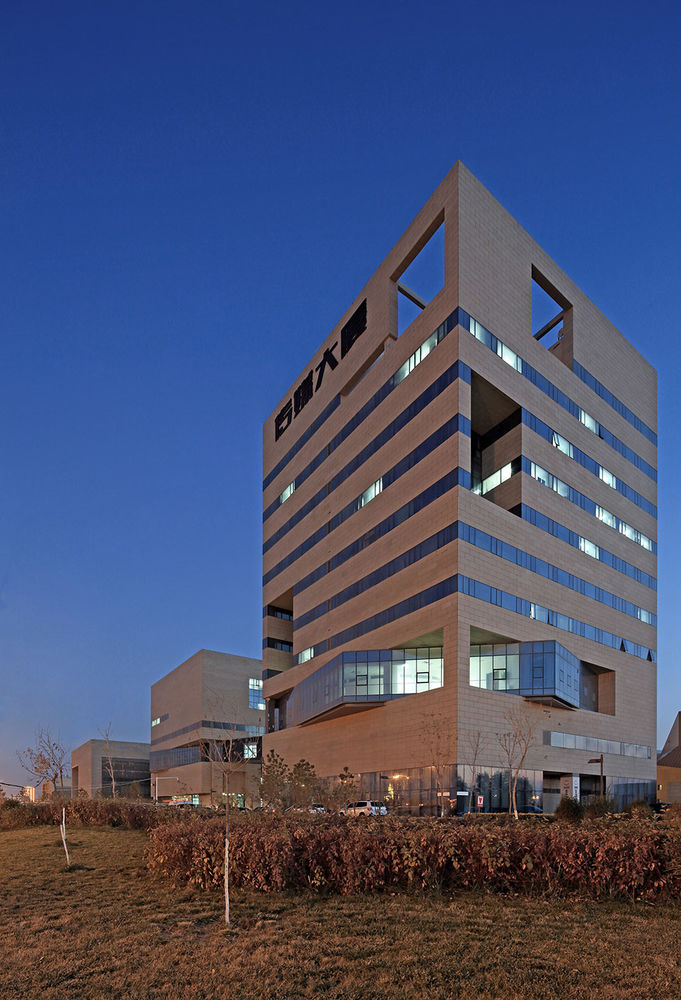
基于当地相对落后的施工水平和有限的投资,在单体造型上均采用易于建造的正方形体造型,采用单元化的模式,降低难度。就地取材,饰面采用当地奇台地区的“卡拉麦里金”石材,既体现厚重的当地建筑气质,又节省了运力和投资。
Based on relatively backward local construction technology and the limited investment, the easy-to-build cube architectural form is mainly adopted in each building by unitized mode to reduce the construction difficulty. Karamori Gold Granite, a local stone material for transport and money saving, is used to build the facade to echo with strong style of local architecture.
▼总平面图,site plan

▼三层平面图,third floor plan
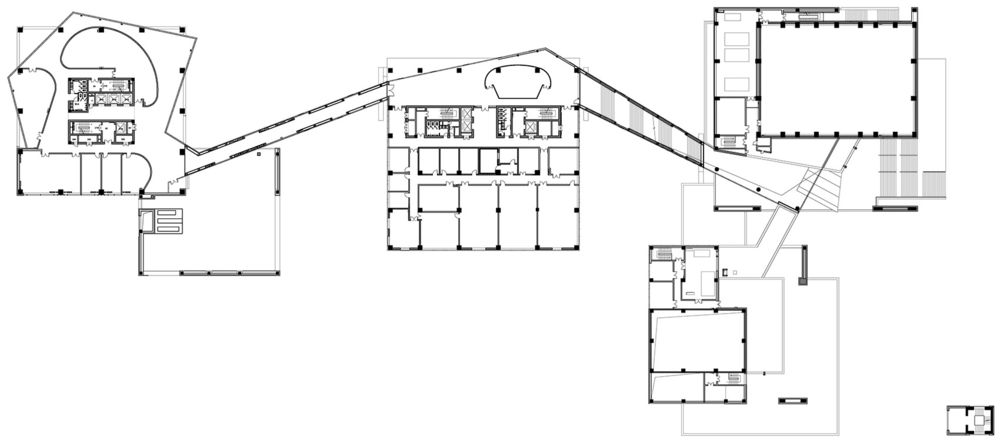
▼立面图,elevation

建设地点:新疆昌吉回族自治州 建筑面积:58 300平方米 建设单位:新疆昌吉回族自治州重建办 建成时间:2014年 设计单位:中国建筑设计院一合建筑设计研究中心U10 设计主持:于海为、谢悦 设计团队:王静、牛涛、郭宇力、潘天佑、颜朝昱、杨磊、秦筑、石路、朱起鹏 项目摄影:张广源 项目撰文:郭宇力、牛涛Project Credits:
Project Location: Changji Hui Autonomous Prefecture, Xinjiang Built-up Area: 58,300m2 Project Construction: Changji Hui Autonomous Prefecture’s Office of Reconstruction, Xinjiang Completion: 2014 Project Design: United Design 10 China Architecture Design & Research Group Leading Designers Yu Haiwei, Xie Yue Architecture Designers: Wang Jing, Niu Tao, Guo Yuli, Pan Tianyou, Yan Zhaoyu, Yang Lei, Qinzhu, Shi Lu, Zhu Qipeng Landscape Designers: Shi Lixiu,Gong Lei Project Photography: Zhang Guangyuan Project Text: Guo Yuli, Niu Tao
